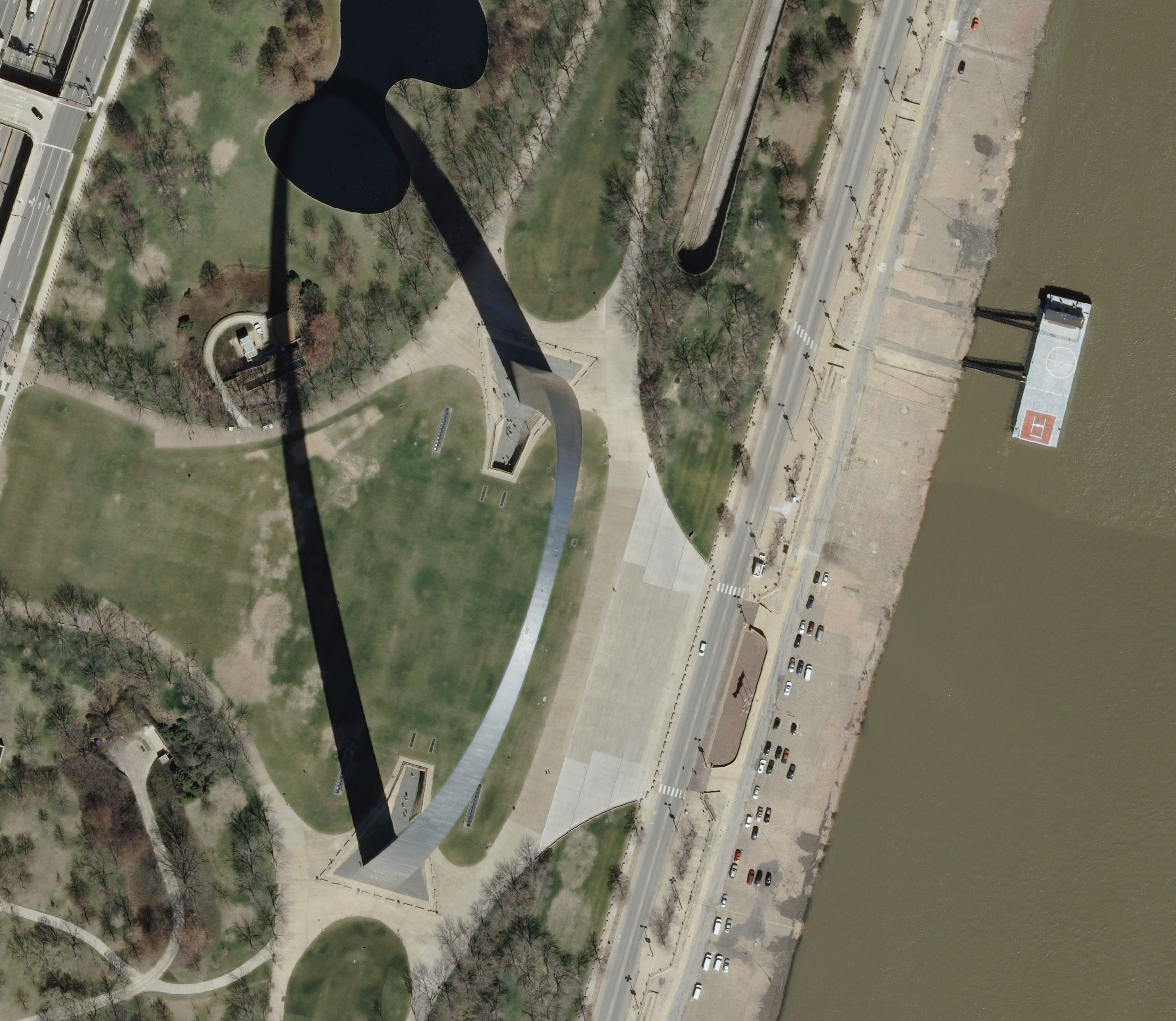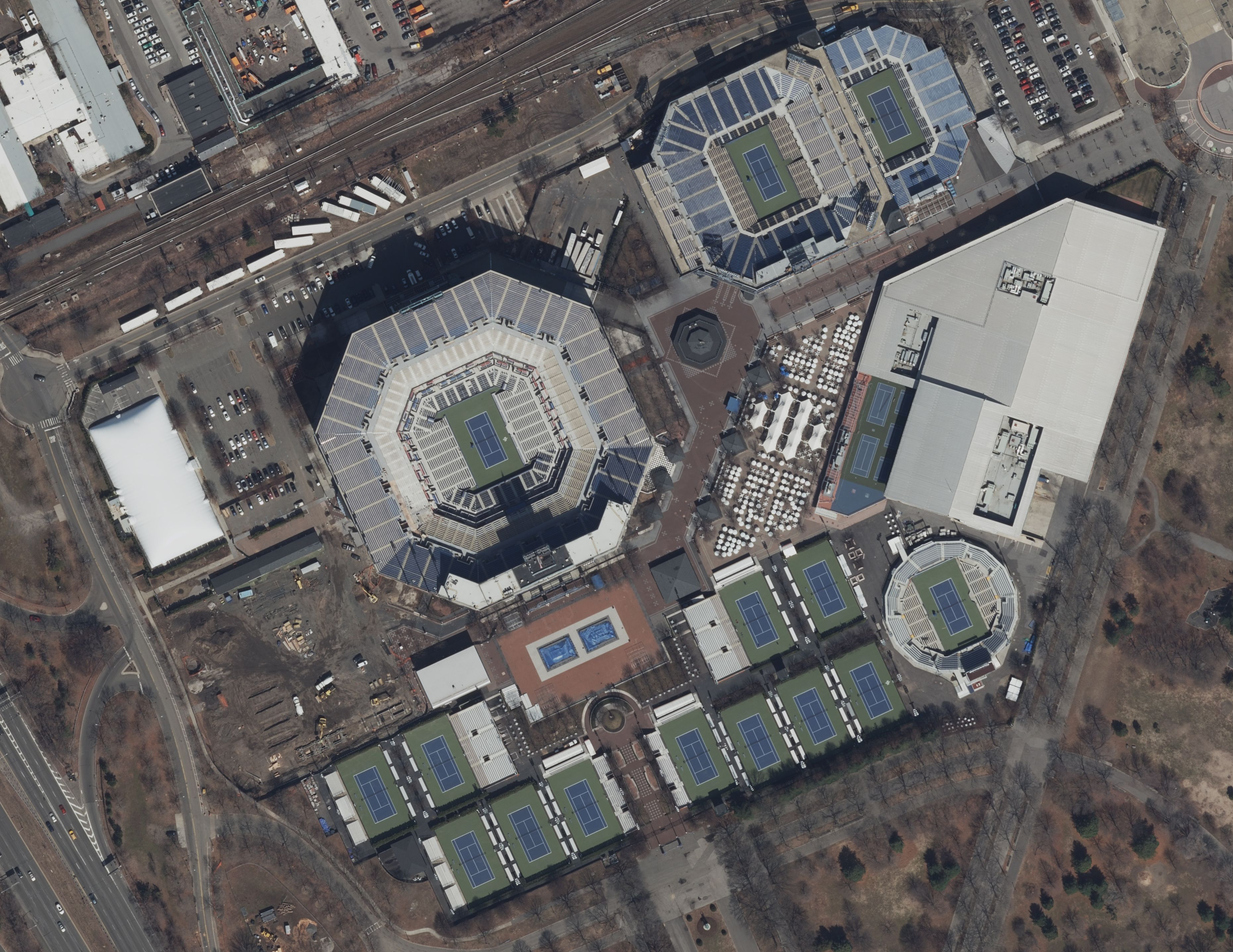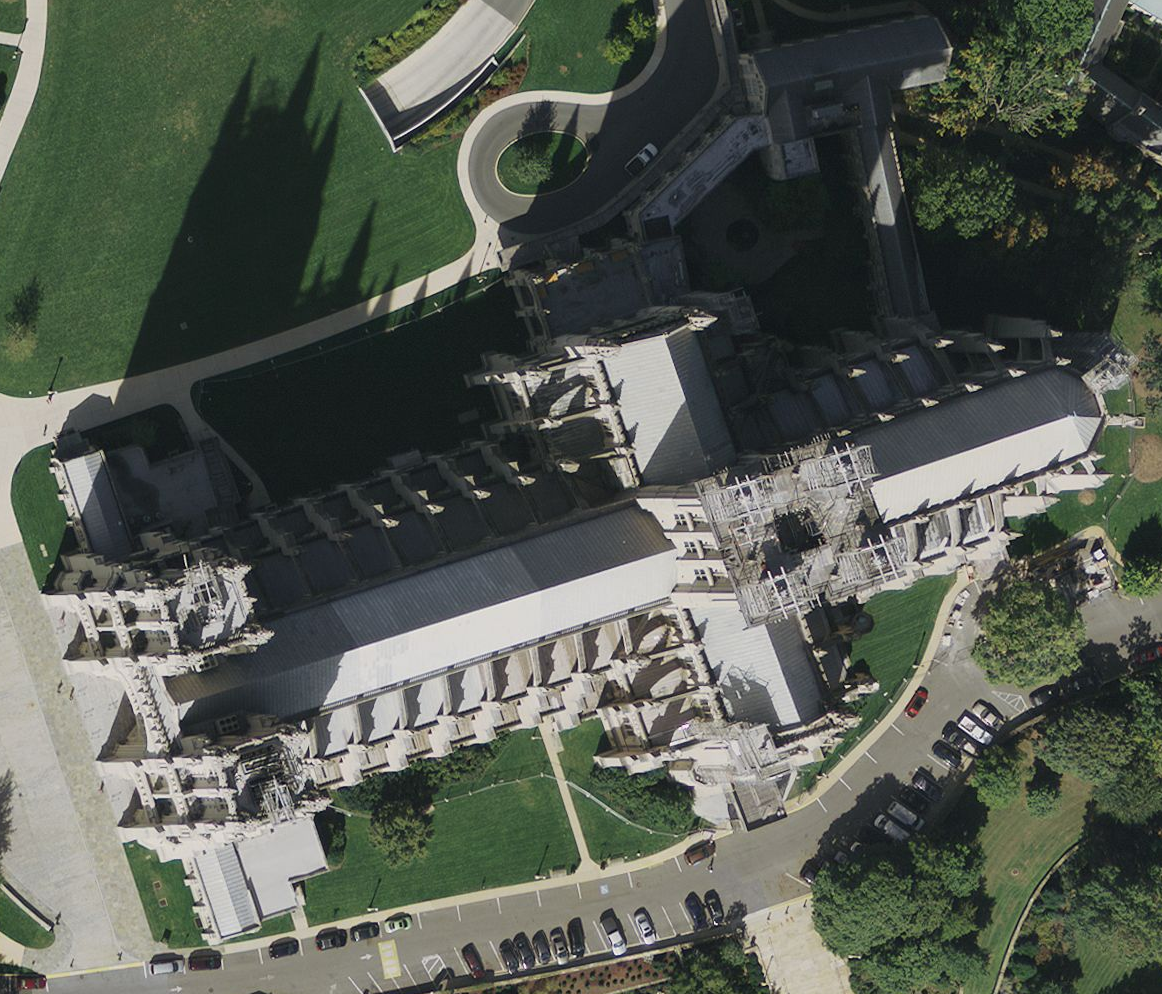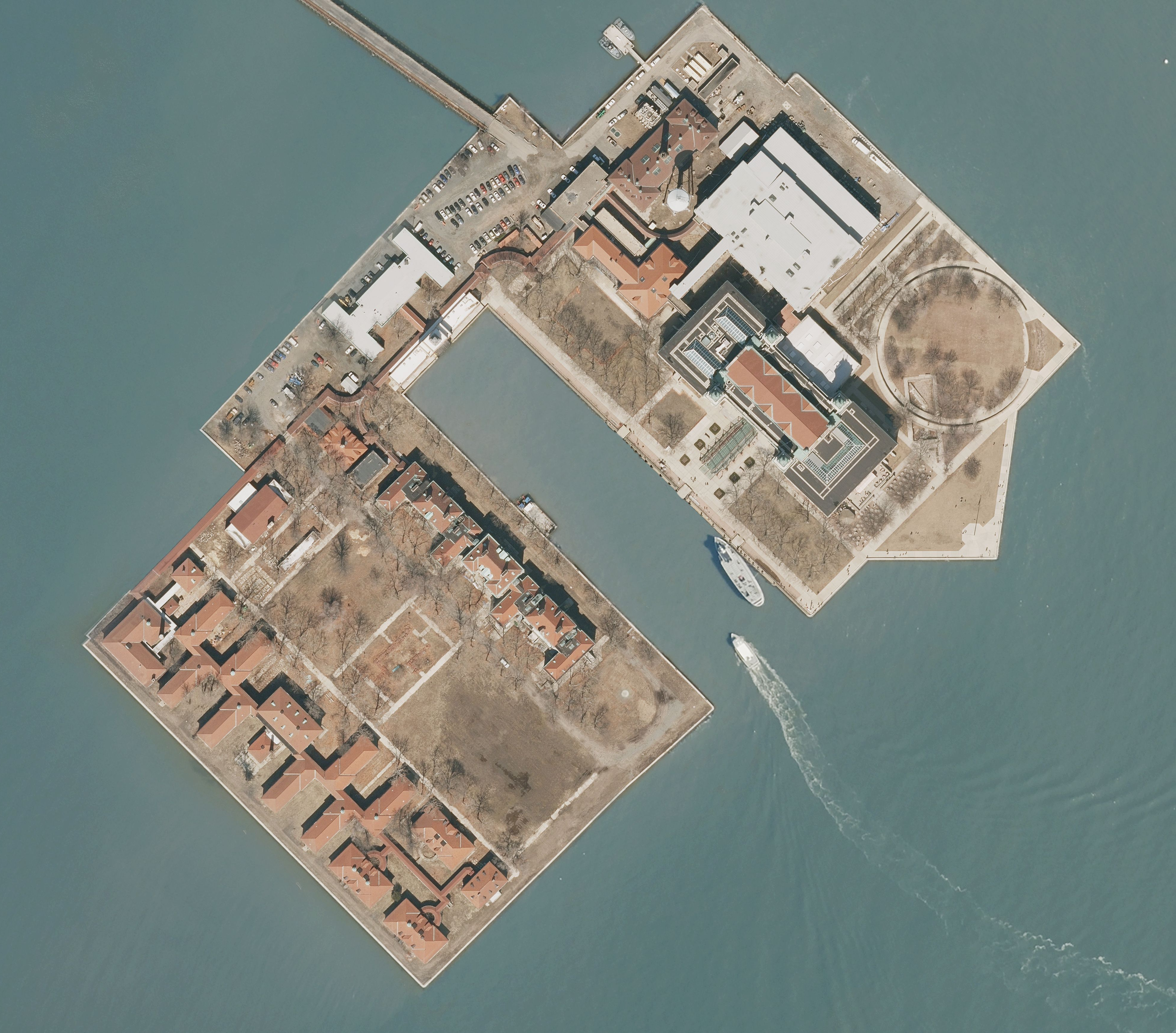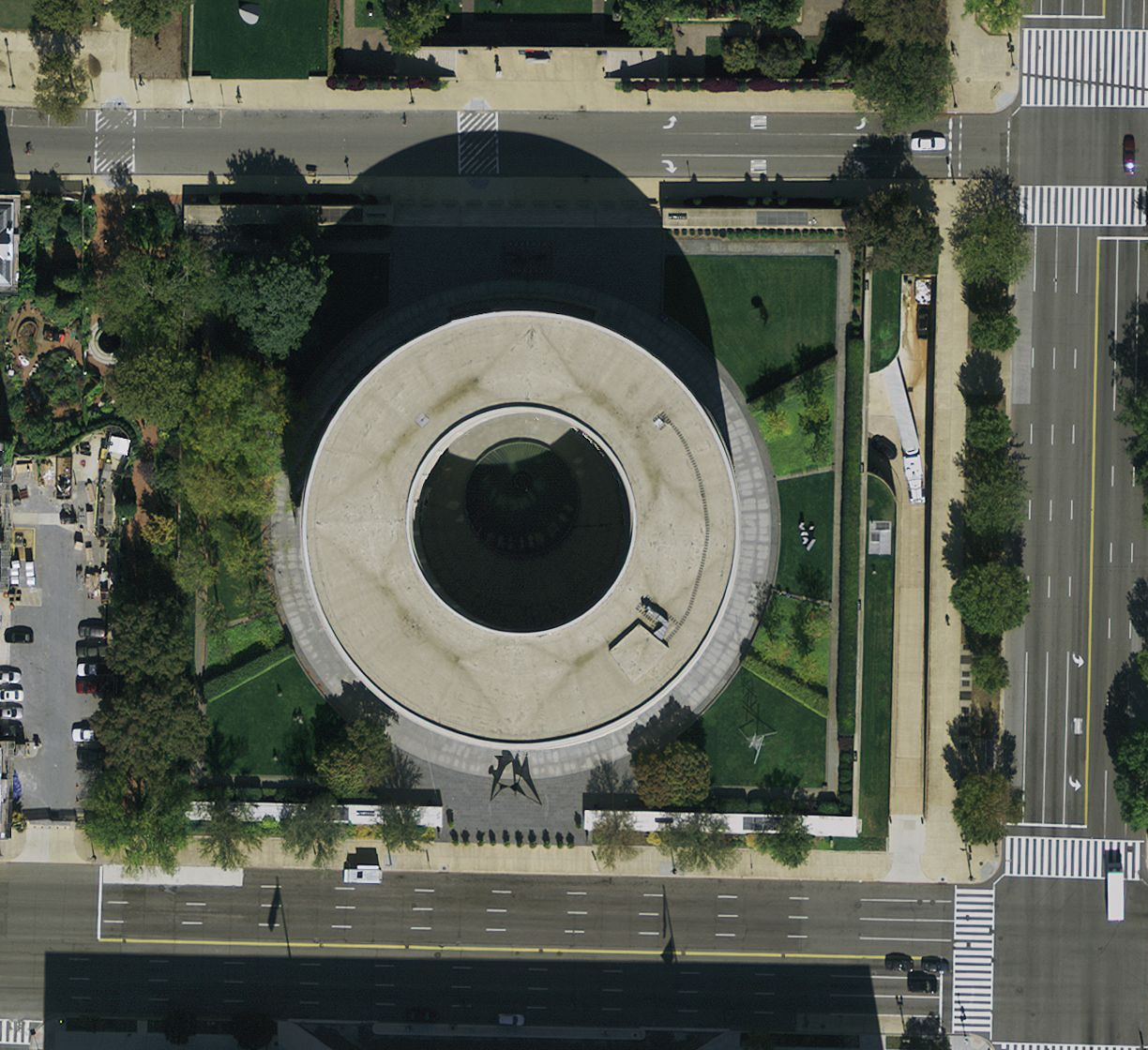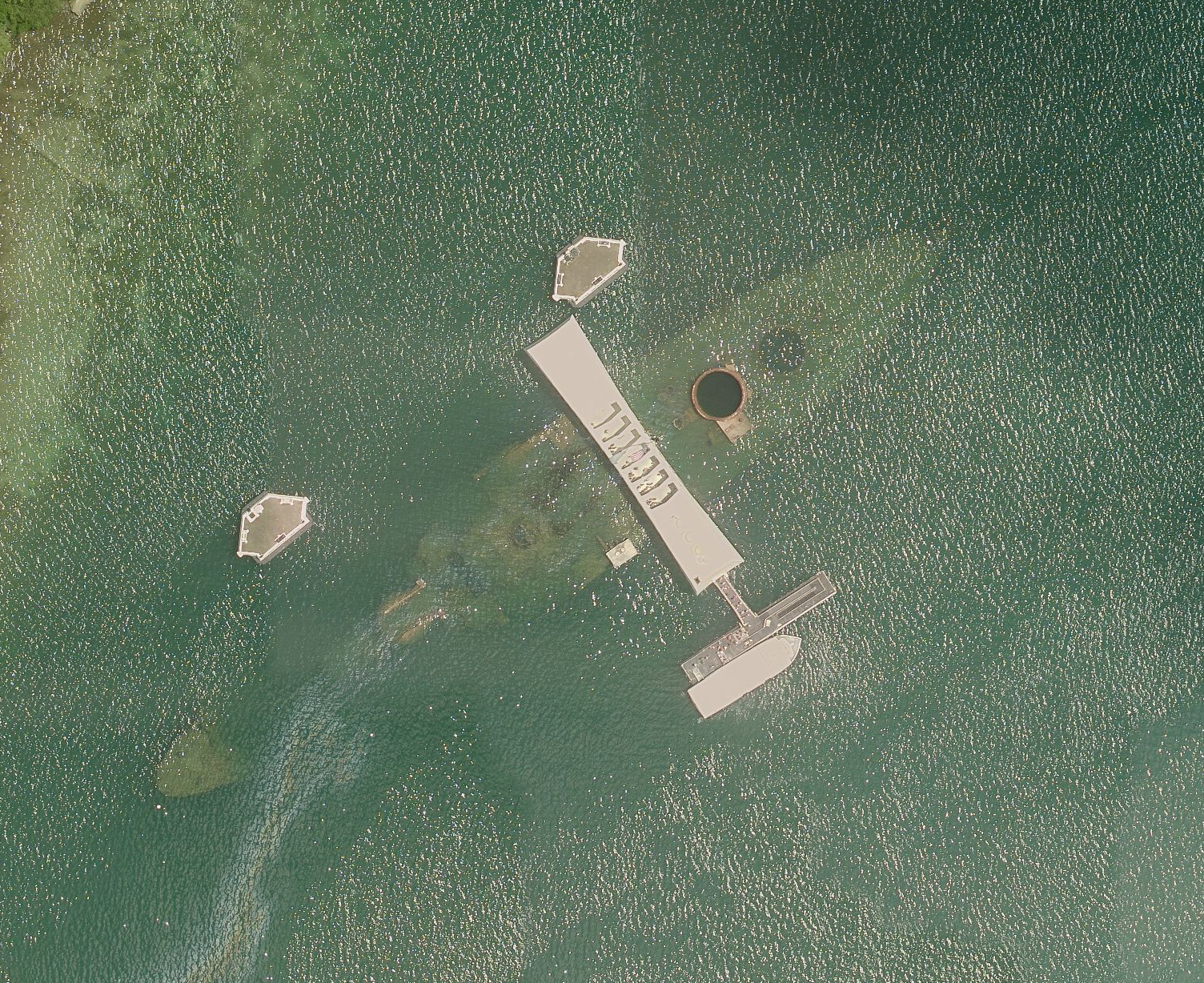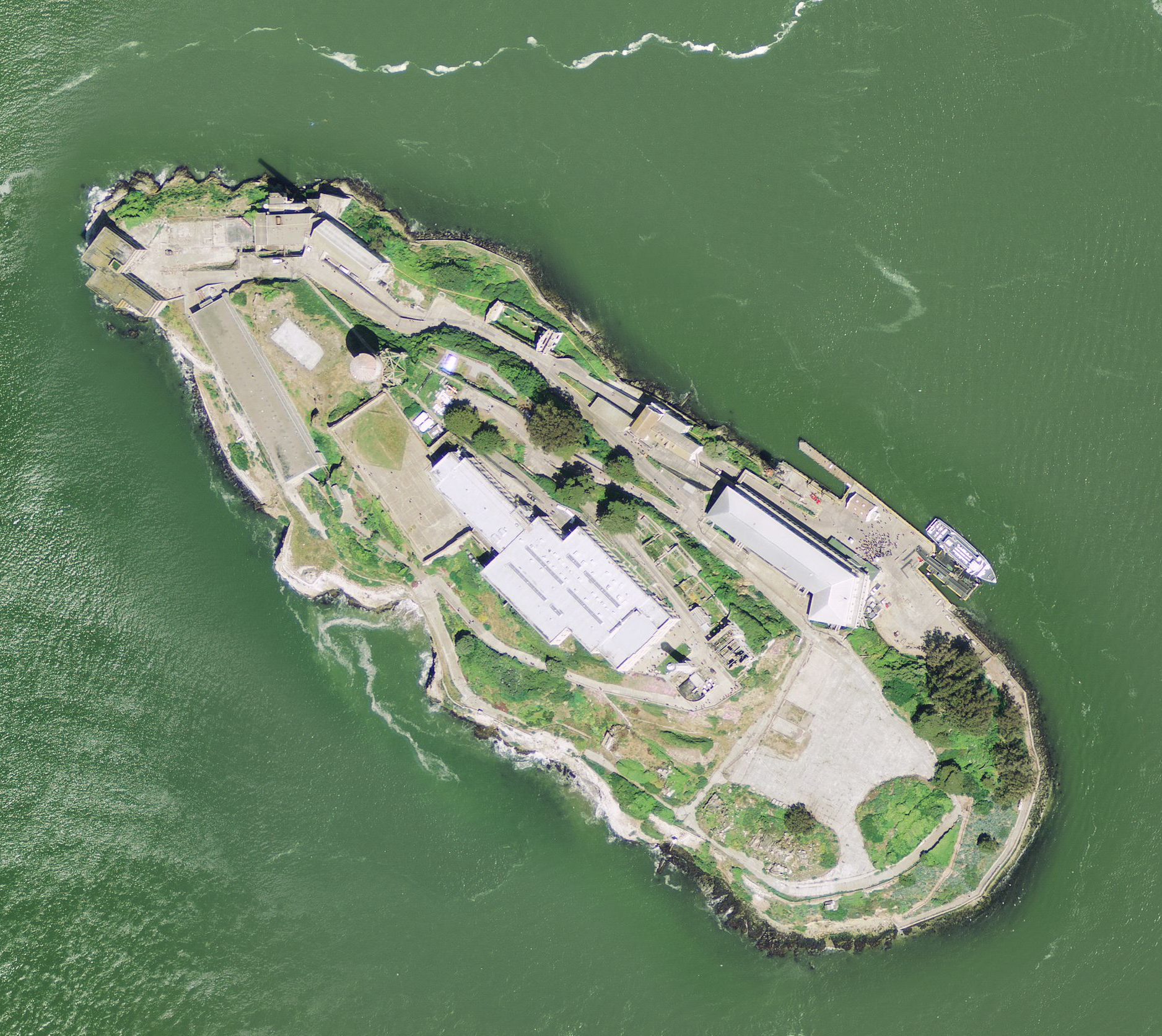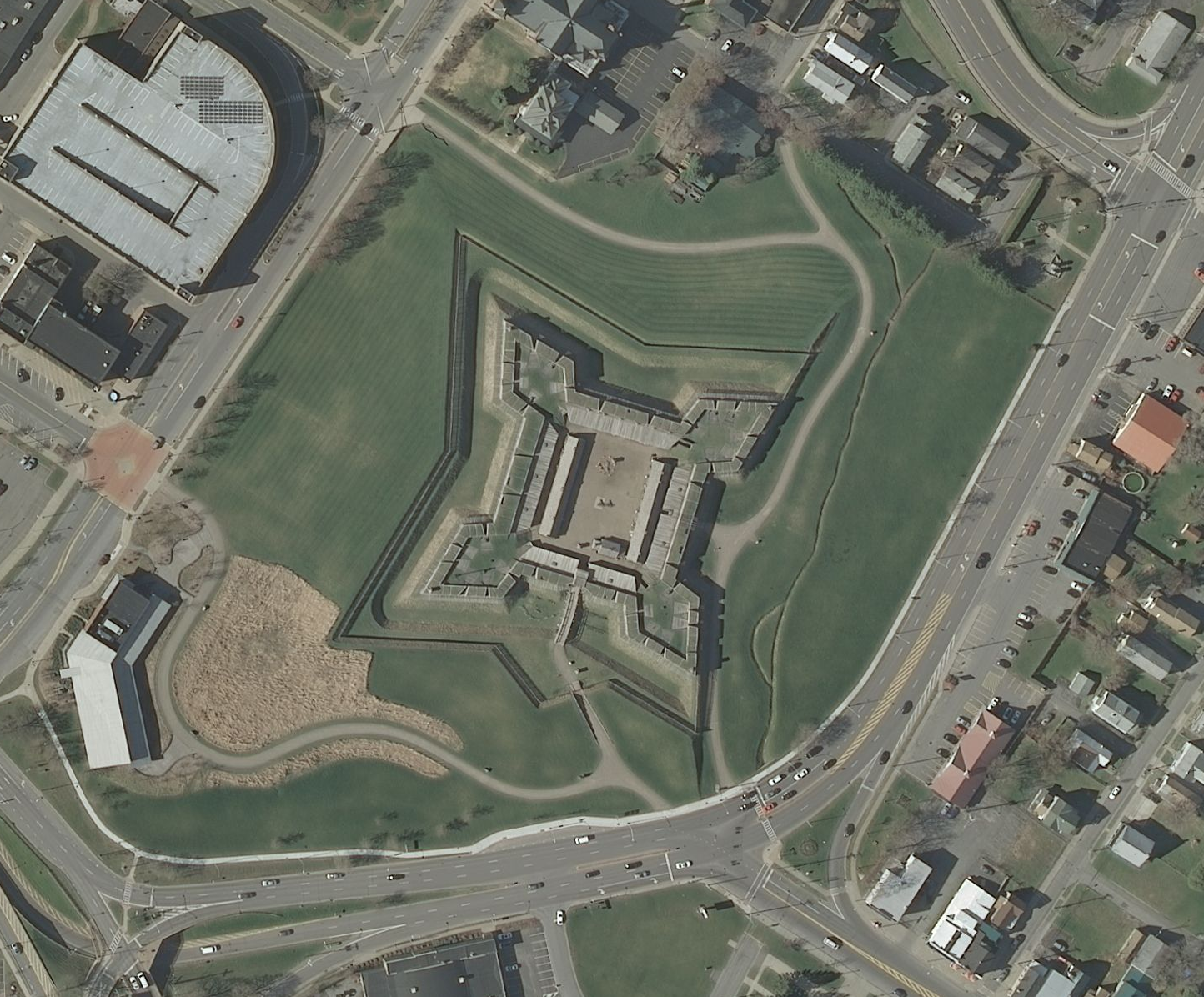Lab 10 - Visual Imagery Interpretation
This lab is a gratefully modified version of lab 9 from Bradley A. Shellito’s Introduction to Geospatial Technologies
This lab will help you start thinking about what objects look like from the sky rather than from the ground. You’ll be examining a series of images and applying the elements of visual image interpretation discussed in the chapter. As you do, you’ll need to think like a detective and search the image for clues to help figure out just what it is you’re looking at. You should be able to figure out exactly what you’re looking at or at least narrow down the possibilities to a short list before you turn to support data for help. Although the items you’ll be examining in this lab will all be large and prominent—buildings and other very visible features—the application of visual image interpretation elements for these simple (and hopefully fun) examples will help get you started looking at the world from above. The goals for you to take away from this exercise:
- Think of how objects look from an aerial perspective
- Apply the elements of visual image interpretation (as described in the chapter) to identify objects in the images
Outline:
| Data Name | Description |
|---|---|
| GEOG111_Lab2Questions.docx | Handout to turn in |
To examine a particular image with more control than your browser, you can download the zipped folder above, unzip it, and open an image using your photo viewer of choice. You can also open the image in either ArcGIS Pro or QGIS. These are .png images so they will load in and request to create pyrimids
Take a look at each of the images and try to determine what you’re looking at. There are questions related to each of them. Although everyone’s application of the elements may vary, there are some guidelines that you may find useful, as described in the following steps. Several images may contain multiple items, but all of them work together to help define one key solution. Let’s start with this sample image:

First, look at the image as a whole for items to identify:
- The central object is obviously some sort of structure—and it is large, judging from the shadow being cast. The relative size of the structure (compared with the size of several of the cars visible throughout the image) suggests that it’s probably a building and not a monument of some kind.
- It’s set on a body of water (the tone of the water is different from the tone of the nearby concrete or greenery). Thus, the site can be fixed.
- One of the most notable features is the large triangular shape of the main portion of the building; note too that its texture is very different from the rest of the building (the three white sections).
- The shape of the entrance is also very distinctive: It is large and round, with a couple of concentric circles.
Based on your interpretation of the initial items, start looking for specifics and relationships between the items in the image:
- The pattern of the concentric circles at the entrance plaza—two outer rings and a third inner ring with some sort of a design placed in it—is striking. Judging from the relative size of a person (pick out shadows near the plaza or on the walkway along the water), the plaza is fairly large. The pattern sort of resembles a giant vinyl record album—and the large curved feature that follows around the plaza on its right looks like the arm of an old record player.
- The texture of the triangular portions of the building suggests that they could be transparent, as if that whole portion of the structure were made of glass.
- There’s no parking lot associated with the building, so you’d have to park somewhere else and walk to this building. Further, there are no major roads nearby, again indicating that this is not some sort of destination that you just drive up to and park next to. The large body of water adjacent to large concrete walkways gives a clue that this building is in a large city.
Put the clues together and come up with an idea of what the object or scene could be:
- The building is distinctive enough to be a monument, but it is probably too large to be one. It could be some sort of museum, casino, shopping center, or other attraction. However, the building is too small to be a casino or resort center, and it lacks the necessary parking to be a casino, an office building, or a shopping center.
- The very distinct “record” motif of the front plaza seems to indicate that music (and, more specifically, older music, given the “vinyl record” styling) plays a large part in whatever the building is.
- From the clues in the image, this could be some sort of music museum, like the Rock & Roll Hall of Fame, which is located in Cleveland, Ohio, right on the shore of Lake Erie. Finally, use auxiliary sources to verify your deduction or to eliminate some potential choices. By using Google Earth to search for the Rock & Roll Hall of Fame, you can confirm the identification. An image search on Google will also turn up some non-aerial pictures of the site to verify your conclusion.
This lab does not provide such extensive details on all the images, and you will not necessarily use all the elements to examine every image. For instance, there may be one or two items in an image that will help you make a quick identification. However, there are enough clues in each image to figure out what you’re looking at—or at least narrow down the choices far enough that some research using other sources may be able to lead you to a positive identification. (For instance, by putting together all the clues from the sample image, you could start searching for large museums dedicated to music. Add the triangular glass structures as part of your search, and the Rock & Roll Hall of Fame will certainly come up.)
Important note: All images used in this exercise are from areas within the United States.
For each image, answer the questions presented below and then explain which of the elements of visual image interpretation led you to this conclusion and what they helped you decide. Writing “shadow and shape helped identify traits of the building” would be unacceptable. It would be much better to write something that answers the question “What was so special about the shadows in the scene or the shape of items that helped?” When you identify the items, be very specific (for instance, not just “a baseball stadium” but “Progressive Field” in Cleveland, Ohio). Use external sources for extra information, such as Websites, search engines, books, or maps. When you think you finally have an image properly identified, you may want to use something like Google Earth or Bing Maps to obtain a view of the object you think you’re looking at in the image to help verify your answer.
Question 1
Examine image 1. What (specifically) is being displayed in this image? What elements of visual image interpretation lead you to draw this conclusion?
Question 2
Examine image 2. There are many similar objects in this image, but you’ll notice some differences too. What (specifically) is being displayed in this image, and what is its location? What elements of visual image interpretation lead you to draw this conclusion?
Question 3
Examine image 3. What (specifically) is being displayed in this image? What elements of visual image interpretation lead you to draw this conclusion?
Question 4
Examine image 4. What (specifically) is being displayed in this image? What elements of visual image interpretation lead you to draw this conclusion?
Question 5
Examine image 5. What (specifically) is being displayed in this image? What elements of visual image interpretation lead you to draw this conclusion?
Question 6
Examine image 6. What (specifically) is being displayed in this image? What elements of visual image interpretation lead you to draw this conclusion?
Question 7
Examine image 7. There are several items in this image but they all add up to one specific thing. What, specifically, is this image showing, and what is its location? What elements of visual image interpretation lead you to draw this conclusion?
Question 8
Examine image 8. There are several items visible in the image, but there’s one that’s more prominent than the others. What, specifically, is this item? What elements of visual image interpretation lead you to draw this conclusion?
Question 9
Examine image 9. What (specifically) is being displayed in this image? What elements of visual image interpretation lead you to draw this conclusion? For instance, it’s obviously an island, but what type of features does the island have (or not have) that may aid in identifying what is being shown here?
Question 10
Examine image 10. What (specifically) is being displayed in this image? What elements of visual image interpretation lead you to draw this conclusion?
There is no need to save anything from this lab, so when done you can simply close without saving. Submit your answers to the questions on blackboard.

